By John O’Ceallaigh
I can’t remember another time I’ve changed my flights back home because of how much I liked my hotel, but that’s what happened at Four Seasons Hotel Ritz Lisbon.
Back in spring I made my first visit to Portugal in years to attend the Virtuoso Symposium, an annual gathering of the world’s biggest hospitality brands and most successful Virtuoso travel advisors. It’s a big deal and its organisers are courted by hotels and tourist boards who compete for the opportunity to welcome such influential individuals: the travel advisors who attend these gatherings have such a moneyed and extensive database of clients that host cities see a clear uptick in high-net-worth visitors after the Virtuoso juggernaut rolls out of town and attendees’ positive feedback spreads.
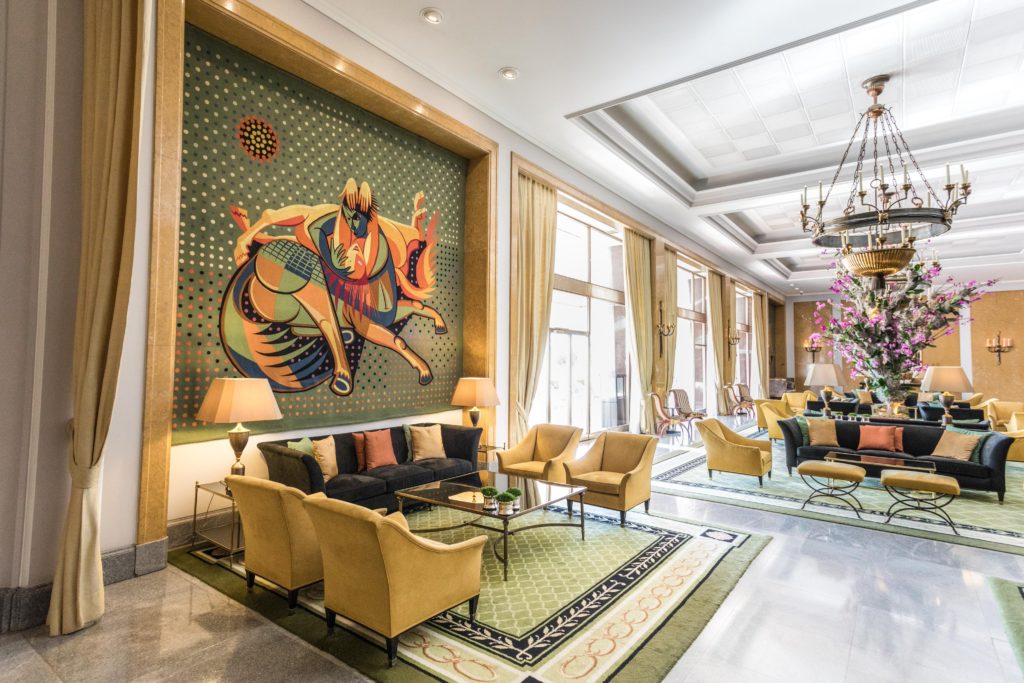
Given my experience at Lisbon’s Four Seasons was so impressive it’s surprising my introduction to the property was so perfunctory. I was one of many attendees at an opening conference in the ballroom at the back of the building. But then even the most mundane everyday spaces in this Portuguese landmark have been designed to make the maximum possible impact. My first impression was so positive I immediately set about booking a stay in the hotel after the Symposium ended, rather than returning home as planned.
The need for the capital to have its own momentous hotel was recognised in 1952 by the dictator António de Oliveira Salazar, who was mindful of the growth of international tourism following the Second World War and also wanted to create an address that would wow even the most cultured and experienced visiting dignitary.
What first strikes you on entering the 282-key hotel is its mammoth scale. Under triple-height ceilings, the sprawling lobby holds towering profusions of floral displays and arresting tapestries; upstairs, the hotel’s corridors are wide enough to accommodate a presidential limo, while alcoves by the elevators are sufficiently large to hold inviting mid-century-style furniture and serve as casual living rooms and meeting spaces. Bedrooms retain generous dimensions alongside some original features, such as glossy-green bathroom units, and almost all have private terraces. Some 40,000sq metres of marble is spread throughout the property.

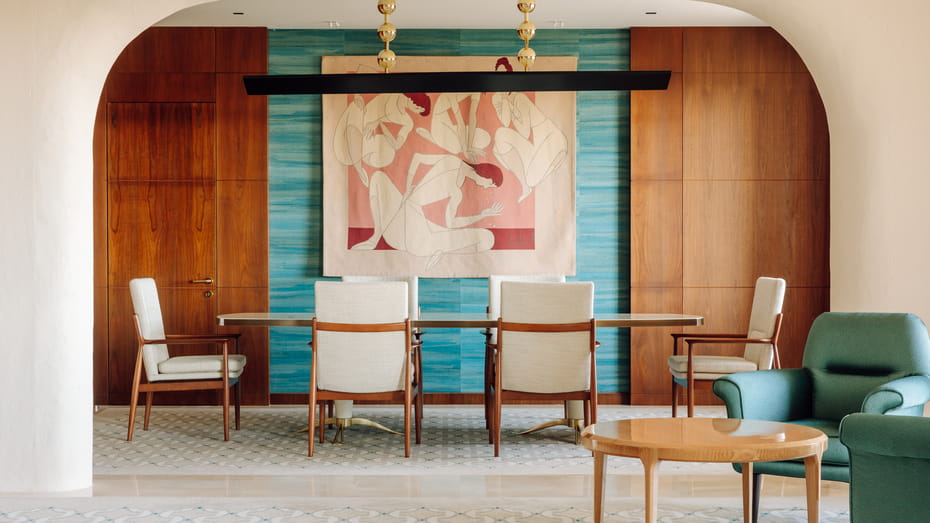
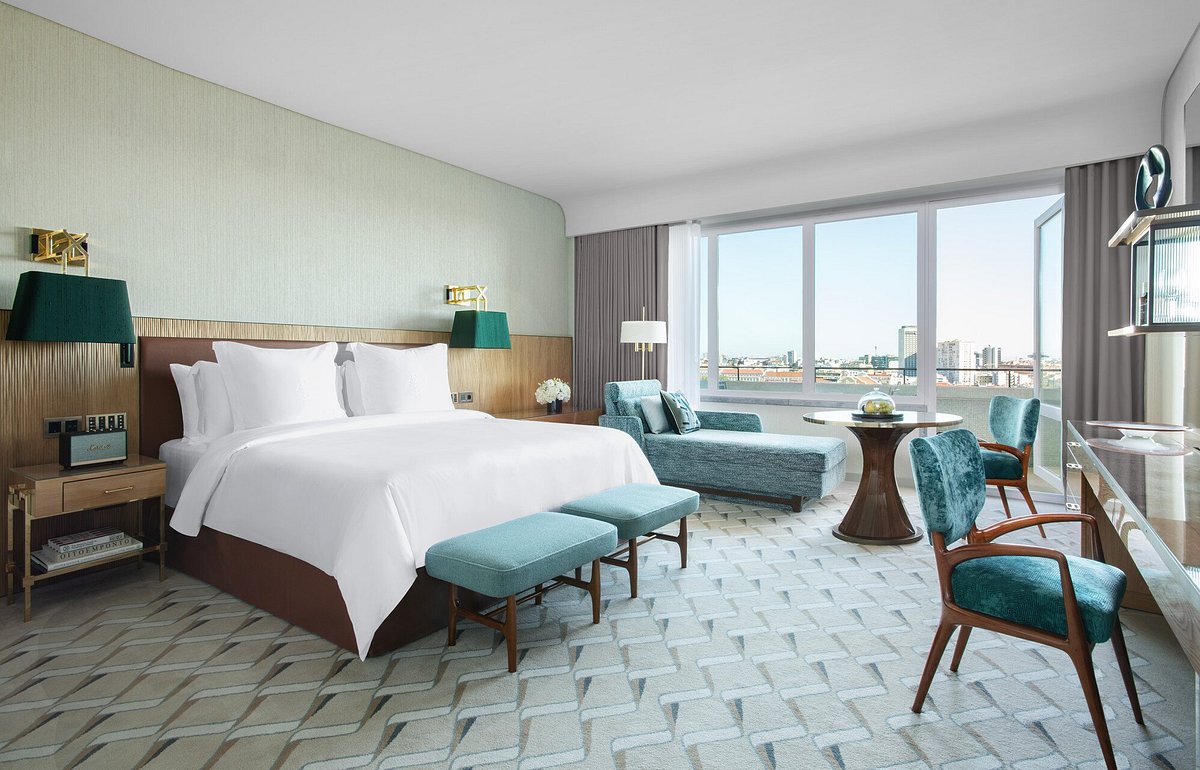
The design of the place is stellar too – simply put, this is just a properly gorgeous-looking hotel. Portuguese architecture studio Oitoemponto was enlisted to refurbish and revive the property in 2019 and the fruits of their efforts were revealed in 2021. One of the studio’s founders had vivid memories of visiting the property before Four Seasons took responsibility for it in 1997, back when it was simply known as The Ritz, and those recollections provided a motivation for delving again into the history of the place and using it to colour guests’ present-day experience.
Oitoemponto describes their approach to the refurbishment as reimagining ‘the past for the present’, and the firm commissioned the creation of bespoke 1950s-style furniture and referenced the hotel’s origins and artefacts in reverential but subtle ways. The zig-zag pattern in the new bedroom carpets, for example, mimics the forms of an artwork that has long hung by the hotel’s lobby bar.
I was captivated by the hotel’s art collection, which really does make so much more impact than you typically find in many five-stars’ anodyne assemblies. It is one of Portugal’s largest and most important privately owned collections of mid-20th-century Portuguese art and much of it has remained in place for decades. Highlights are the aforementioned tapestries that hang in the lobby, each by Almada Negreiros whose admiration for Picasso is plain to see in the disjointed figures who grace these works. Equally beautiful, but missed by most guests given its position at the very back of the hotel, is the swirling grand spiral staircase that hangs like a question mark in the air as it wends its way to the ballroom. There’s so much to see that the hotel has launched a standalone app that provides easy-to-follow tours of the collection, and it’s actually worth downloading.
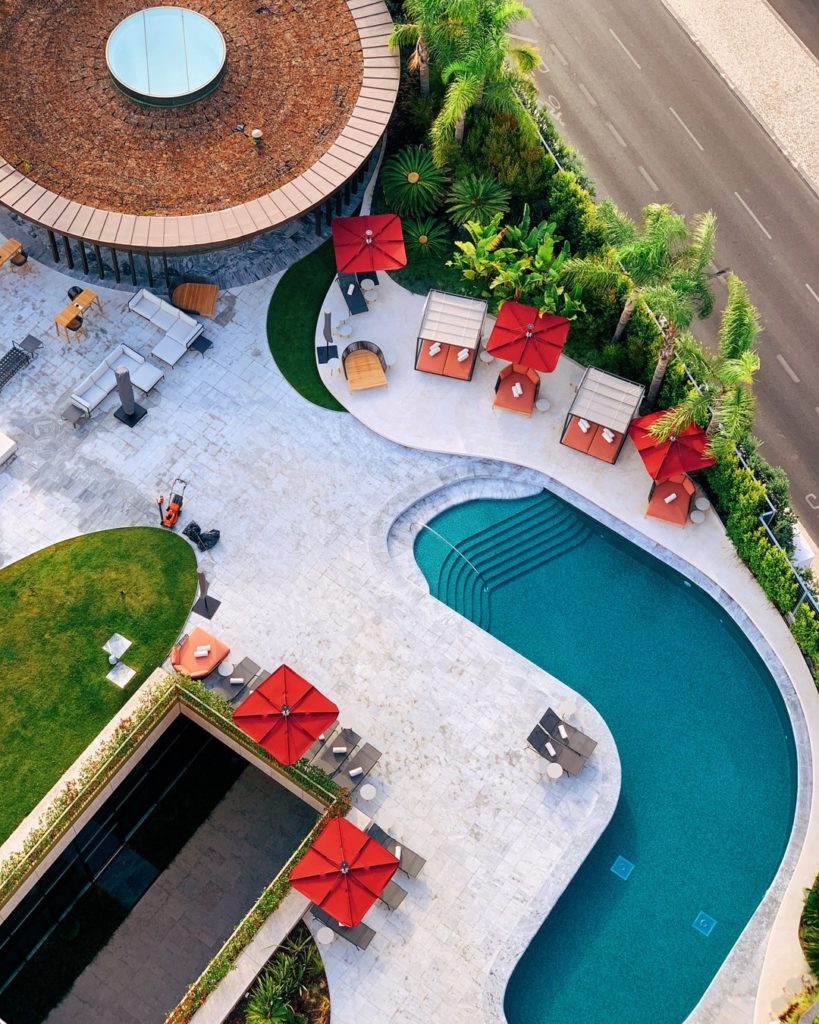
I was also impressed by the basement-level lap pool and old-school spa, though unseasonably cold weather meant it wasn’t possible to make use of the new outdoor pool (anachronistically but cutely shaped like a kidney bean, it looks like it has always been there and is more for wallowing and posing than proper swimming). Available in all weathers, and worth seeing even if you’re allergic to exercise, the hotel also has its own outdoor rooftop jogging track, which encircles its rooftop gym.
The views of the city and the Atlantic are spellbinding, and totally uncustomary. Ordinarily hotels would convert this key real estate into a rooftop bar or restaurant, or perhaps a knockout signature suite commanding a hefty five-figure nightly rate. The panorama both complemented and distracted from my workout – I don’t know the economic justification for retaining the fitness facilities here, so presume there are some planning complications that prohibit it from being converted. (That said, the remodelled Jumeirah Carlton Tower hotel in Knightsbridge, London, also has a fantastic rooftop gym, though it seems to be in much heavier use and with a high proportion of its customers locally based members.)


Back to the Four Seasons in Lisbon, there are no gym changing rooms on the top floor either, which was a minor irritation; gym-goers need to change in their rooms or in the basement-level spa before ascending. I didn’t hear much criticism, however, about newly opened fine-dining restaurant Cura, already garlanded with a Michelin star in the most recent awards.
With its name taken from the Portuguese curadoria, which means ‘curatorship’, the restaurant’s menus all concentrate on locally sourced, seasonal ingredients. Hardly a unique approach nowadays, but the food is excellent – I was happy to hear the man at the table behind me tell his partner that he was very much enjoying the best meal of his life.
My experience wasn’t quite at that level, but the restaurant is sophisticated, service is on point and everything again feels very proper. Alongside an a la carte option, diners can choose from three set menus: raízes is the €85 vegetarian menu; eight-course meia cura is the lighter of two tasting menus and costs €105; origins is the complete tasting menu and comes in at €145. I chose the last option, which was highly creative, beautifully presented and incorporated a few surprise treats along the way – a chunk of turbot came with barnacles and lemongrass; a sliver of squid was laced with caviar and slathered in roasted seaweed butter and hazelnut; to finish, spiced pear and cereals felt relatively healthy.
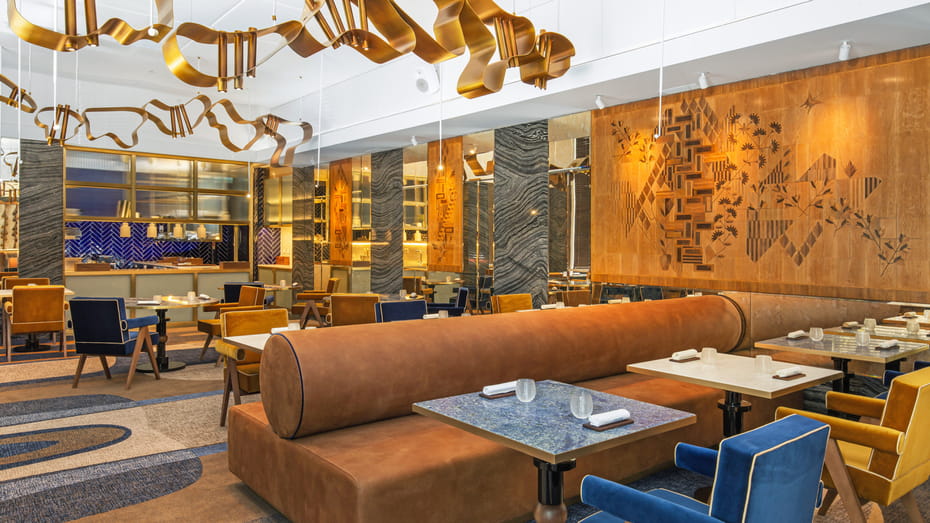
If/when I return to the hotel, I’ll aim to visit for its weekend brunch. I saw families and friends sweep into Varanda restaurant as I checked out on Sunday, for a Bacchanalian menu that heaves with hearty global dishes and brunch staples – pancakes galore, waffles, French toast – and endless desserts. From what I saw the vibe seemed celebratory and totally carefree, with a grand, classic style that predated concerns about excessive calories and joy-free overly healthy eating. That old-school sensibility seemed to me to fit in very nicely with the hotel more generally.
Accommodation at Four Seasons Hotel Ritz Lisbon starts at €610 per night, room only; the American buffet breakfast at Varanda restaurant costs €53 per person.
If you’d like to know more about the hotel, including details on how to access extensive additional privileges and benefits with your best-available-rate booking, email joc@lute.co.
LUTE is a luxury-travel consultant and content agency that works with hotel groups, tour operators, tourist boards, airlines and more. You can learn more about LUTE here. For frequent luxury-travel updates, follow LUTE and LUTE founder John O’Ceallaigh on Instagram.
